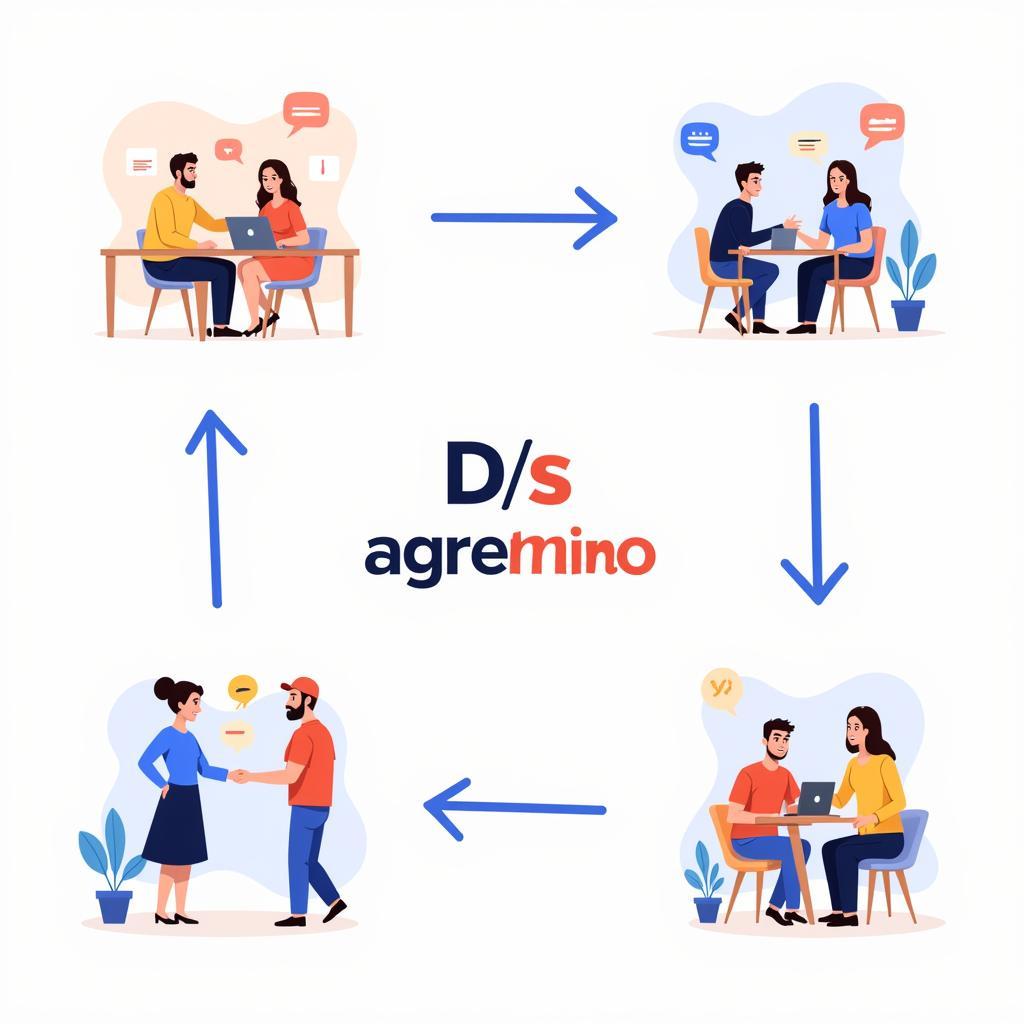A Dominant Submissive Agreement, often shortened to D/s or DS, outlines the dynamics of a power exchange within a relationship. This isn’t about everyday power imbalances, but a consensual and negotiated exploration of roles, boundaries, and responsibilities. It’s important to understand that a D/s agreement is a personal and evolving document, not a rigid contract. Exploring this dynamic requires careful consideration, communication, and a deep understanding of both yourself and your partner. Let’s delve deeper into what makes a D/s relationship work.
What Constitutes a Dominant Submissive Agreement?
A dominant submissive agreement is a foundation of a D/s relationship. It explicitly defines the roles, expectations, and boundaries of both the dominant and submissive partners. This agreement can be written or verbal, detailed or general, but it must always prioritize clear communication and mutual consent. It acts as a roadmap for the relationship, helping to navigate the complexities of power dynamics while ensuring everyone feels safe and respected.
What distinguishes a healthy D/s dynamic from other relationships is the clear delineation of power. The dominant partner assumes a position of leadership and control, while the submissive partner willingly relinquishes some degree of control and finds pleasure in following the dominant’s guidance. It’s vital to remember that this power exchange is negotiated and consensual, not forced or coerced.
Key Elements of a D/s Agreement
- Roles and Responsibilities: Clearly defining who takes the lead and who follows in various aspects of the relationship.
- Boundaries and Limits: Establishing hard limits and boundaries for both partners, ensuring everyone’s comfort and safety. This is paramount.
- Communication Protocols: How will you communicate needs, desires, and concerns within the dynamic? This could include safe words, signals, or regular check-ins.
- Negotiation and Renegotiation: Understanding that the agreement is not static and can be revisited and revised as the relationship evolves.
- Consent and Aftercare: Emphasizing the importance of ongoing consent and the practice of aftercare, which involves emotional and physical support after scenes or activities.
A D/s agreement is not about one partner controlling the other. It’s about creating a framework for exploring power dynamics in a safe and consensual way.
Why Have a Dominant Submissive Agreement?
The purpose of a D/s agreement goes beyond simply defining roles. It serves as a safeguard, a communication tool, and a foundation for growth within the relationship. It fosters trust and understanding by ensuring both partners are on the same page. This agreement also helps prevent misunderstandings and power imbalances that could be detrimental to the relationship.
 Benefits of a D/s Agreement
Benefits of a D/s Agreement
Common Misconceptions about D/s
Many people misunderstand D/s relationships, often conflating them with abusive situations. This is a critical distinction. A healthy D/s dynamic is built on mutual respect, consent, and negotiation. It is not about one partner taking advantage of the other. It’s important to differentiate between consensual power exchange and coercion.
“A D/s relationship is about trust and communication, not about control and abuse,” explains Dr. Anya Sharma, a relationship therapist specializing in alternative relationship models. “The agreement is the cornerstone of that trust, ensuring everyone feels safe and respected.”
Building a Healthy Dominant Submissive Agreement
Creating a D/s agreement is a process of self-discovery and open communication. It requires honesty, vulnerability, and a willingness to discuss potentially sensitive topics. Both partners must be actively involved in the process, ensuring their needs and desires are fully addressed. It’s not a one-time event; rather, it’s an ongoing conversation.
Tips for Creating Your Agreement
- Start Slow: Begin with general discussions about your interests and boundaries.
- Be Specific: Avoid vague language. Clearly define what each role entails and what is acceptable/unacceptable.
- Regular Check-ins: Schedule regular times to discuss the agreement and make adjustments as needed.
- Seek Professional Guidance: A therapist specializing in alternative relationships can provide valuable support and guidance.
Building a healthy and fulfilling D/s relationship requires effort, communication, and a commitment to mutual respect. The agreement is a vital tool in this journey, helping to navigate the intricacies of power exchange while prioritizing the well-being of both partners.
Conclusion
A dominant submissive agreement is a crucial element of a healthy D/s relationship. It establishes clear boundaries, fosters open communication, and ensures both partners are on the same page. It’s about navigating the complexities of power dynamics with consent, respect, and a commitment to mutual growth. Understanding the purpose and importance of a dominant submissive agreement is essential for anyone considering exploring this type of relationship.
 Creating a Healthy DS Dynamic
Creating a Healthy DS Dynamic
FAQ
- Is a D/s agreement legally binding? Generally, no. It’s more of a personal contract between partners.
- Can a D/s agreement be changed? Yes, it should be revisited and renegotiated as needed.
- What if one partner violates the agreement? Open communication is key. Discuss the violation and its impact.
- Is D/s the same as BDSM? D/s is often a component of BDSM, but they are not synonymous.
- Where can I find more information about D/s? There are numerous online resources and books dedicated to exploring D/s relationships.
Do you have other questions regarding Dominant Submissive Agreements? We have other articles covering related topics on our website.
Need help with navigating your D/s relationship? Contact us! Phone: 0902476650, Email: [email protected] or visit us at 139 Đ. Võ Văn Kiệt, Hoà Long, Bà Rịa, Bà Rịa – Vũng Tàu, Việt Nam. Our customer service team is available 24/7.





